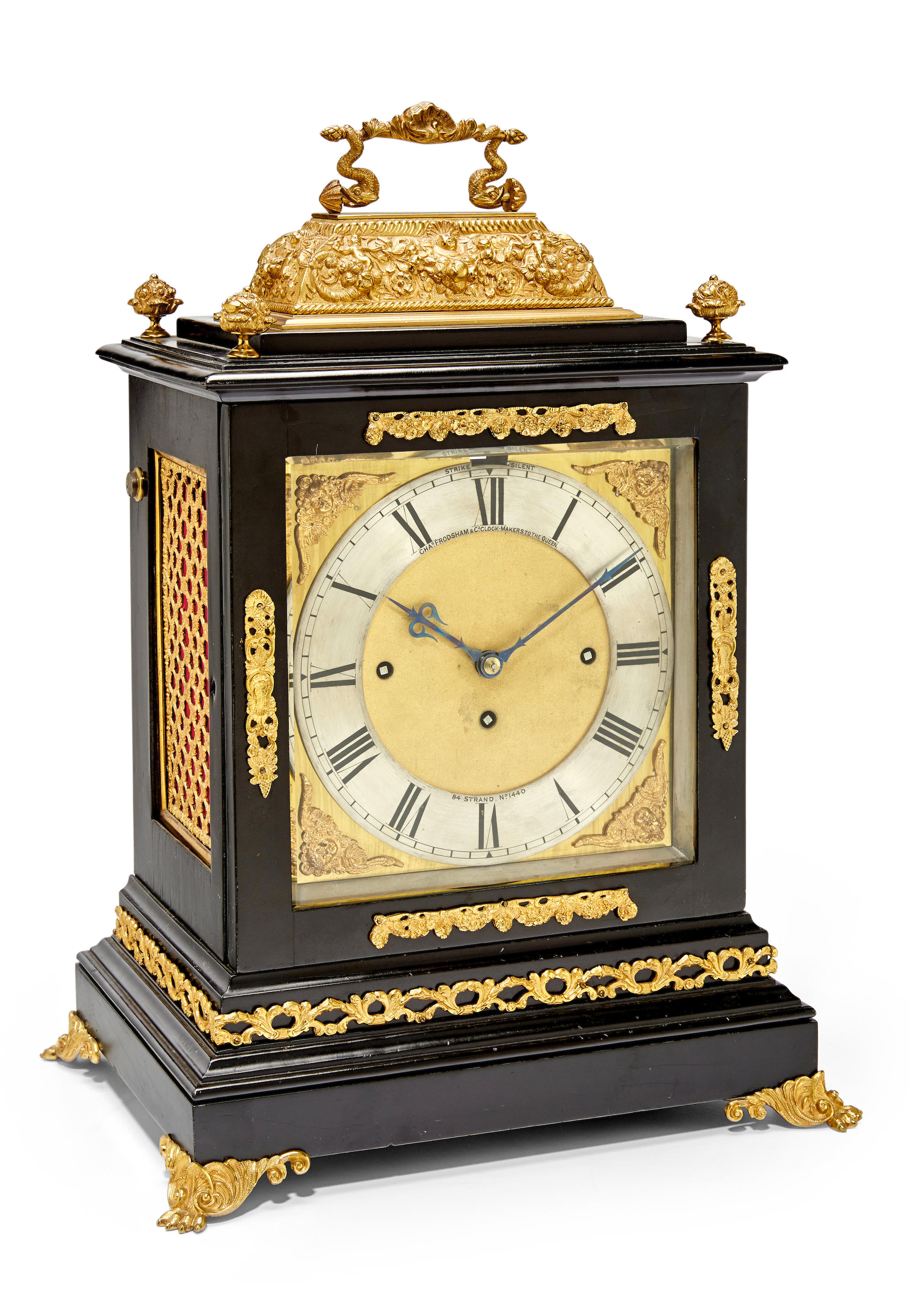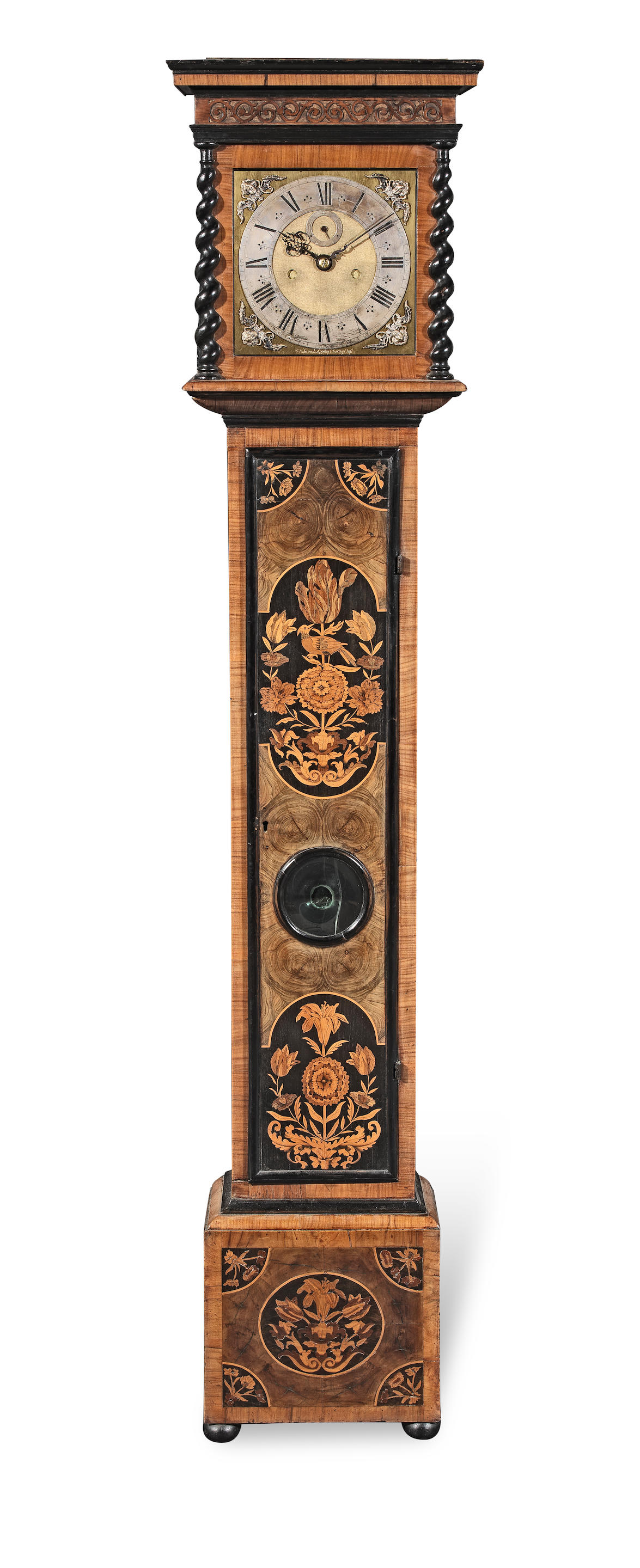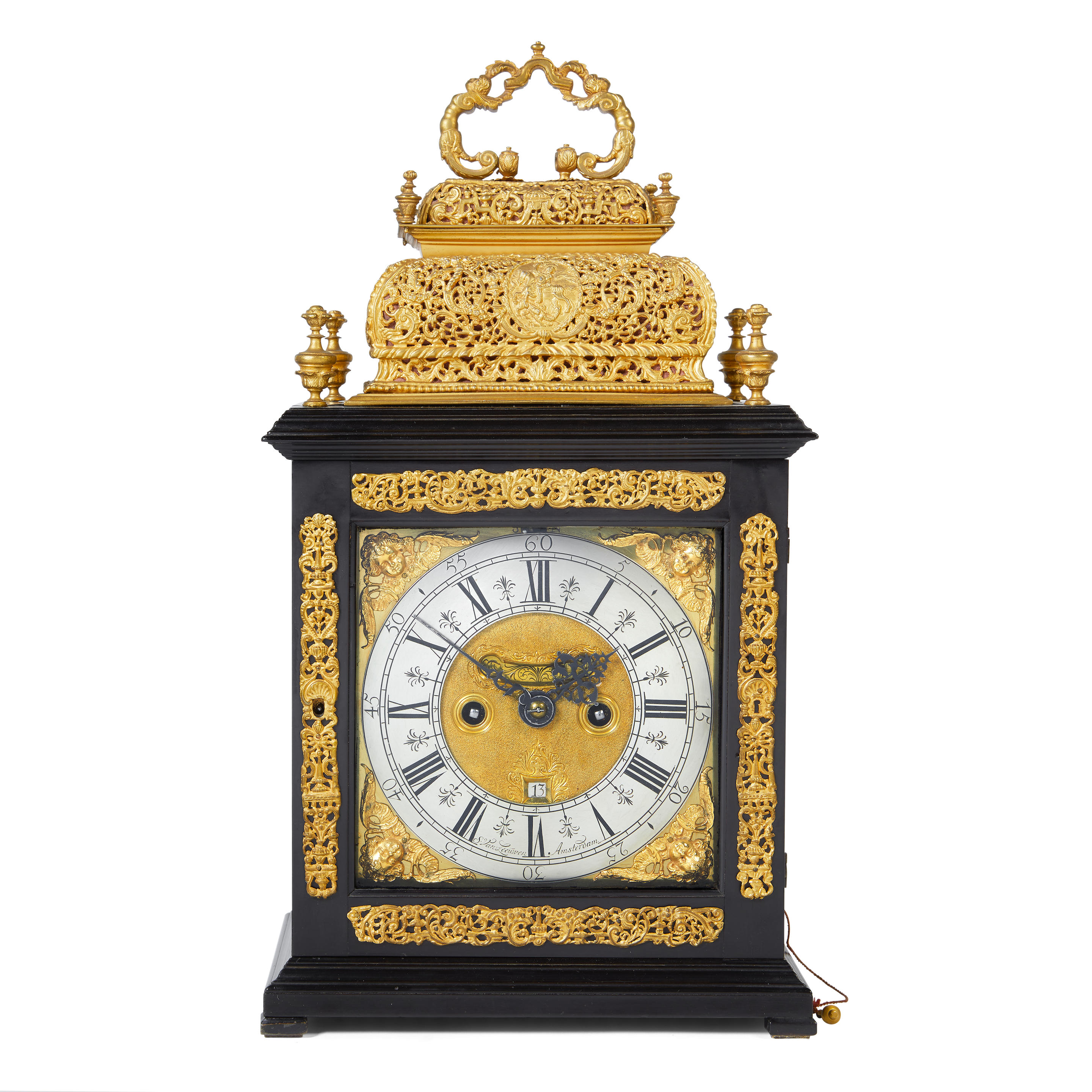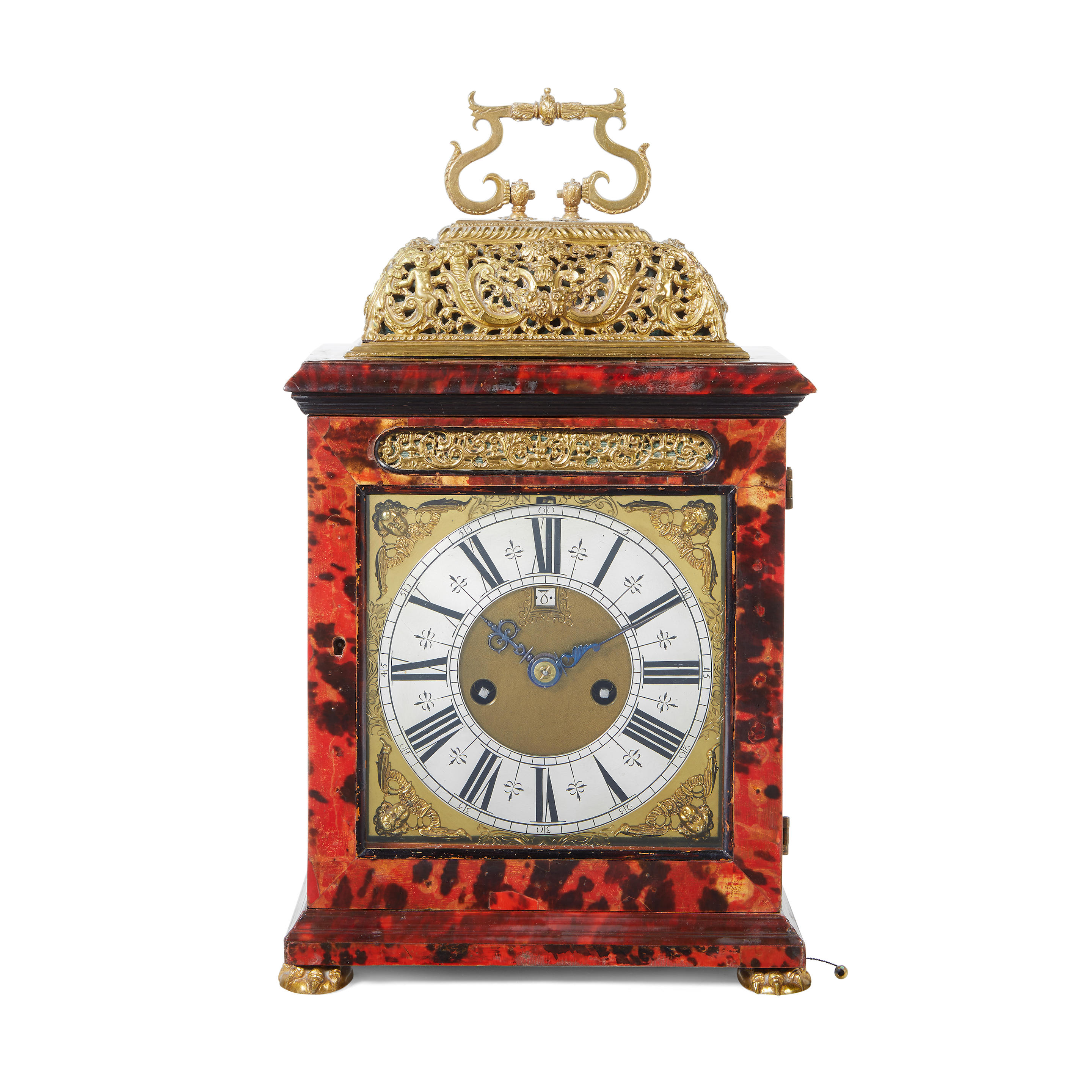A good late 17th century ebony table clock with pull quarter repeatJacob Hassenius, Whitehall London The case with shallow caddy top surmounted by a delicate cast brass floral handle over a simple moulded cornice, rectangular glazed side panels and plain moulded base on brass button feet, the front door with cherub escutcheons in the manner of Joseph Knibb to the front, all on a narrow-moulded base with brass button feet. The 6inch square brass dial with winged cherubs head spandrels framing the silvered chapter ring, the minute band with engraved Arabic five minutes, the Roman hour ring with trefoil half-hour markers on a quarter-hour track, the finely matted centre with a chamfered date aperture, and robust pierced blued steel hands. The twin gut fusee movement with six knopped and ringed pillars, knife-edge verge escapement set behind a heart-shaped engraved apron, rack striking, and repeating the quarters and hours on a pair of bells and hammers. The backplate with line border enclosing a symmetrical pattern of pairs of tulips, irises, and another pair of flowers with elongated crosshatched buds, all linked by foliate scrolls, signed in a foliate cartouche Jacobus Hassenius near Whitehall, London. Ticking, striking and repeating, together with two case keys and a winding key. 31cms (12ins) highFootnotesAnother clock by Jacob Hassenius with a similar backplate is featured in the supplement to Dzik, S. (2019) Engraving on English Table Clocks: Art on a Canvas of Brass 1660-1800, Wild Boar Publications, (H3-3). Jacobus Hassenius was a Russian watchmaker made a Free Brother of the Worshipful Company of Clockmakers in Jan 1682/3. He paid quarterage until 1697 when it is thought that he returned to Russia. The fact that his departure was in the same year that Peter the Great visited London is unlikely to be a coincidence. Peter was here (and had visited The Netherlands) to tour shipyards, keen to learn more on shipbuilding techniques. He also used the trip to visit the Royal Observatory at Greenwich and the Royal Society. As well as gathering knowledge, he also enlisted some 60 master craftsmen from London to follow him back to Russia. In 1698 Hassenius was granted a warrant " to pemit James Hassenius to export to Muscovy for the use of his Imperial Majesty the Czar of Muscovy 13 clocks, 3 large or long clocks, a great table clock and some tools his majesty bought in the Strand ". Undoubtedly Hassenius' experience of working in London would have been highly valuable to the Tsar and Hassenius would have been obliged to return to his homeland. On May 1st 1703 Peter the Great captured the Swedish fortress of Nyenskans on the banks of the Neva and on May 27th St. Petersburgh was founded. Peter's ambition for Russia to become a naval power was fulfilled. The Russian Navy continued to receive English support throughout the 18th century.
A good late 17th century ebony table clock with pull quarter repeatJacob Hassenius, Whitehall London The case with shallow caddy top surmounted by a delicate cast brass floral handle over a simple moulded cornice, rectangular glazed side panels and plain moulded base on brass button feet, the front door with cherub escutcheons in the manner of Joseph Knibb to the front, all on a narrow-moulded base with brass button feet. The 6inch square brass dial with winged cherubs head spandrels framing the silvered chapter ring, the minute band with engraved Arabic five minutes, the Roman hour ring with trefoil half-hour markers on a quarter-hour track, the finely matted centre with a chamfered date aperture, and robust pierced blued steel hands. The twin gut fusee movement with six knopped and ringed pillars, knife-edge verge escapement set behind a heart-shaped engraved apron, rack striking, and repeating the quarters and hours on a pair of bells and hammers. The backplate with line border enclosing a symmetrical pattern of pairs of tulips, irises, and another pair of flowers with elongated crosshatched buds, all linked by foliate scrolls, signed in a foliate cartouche Jacobus Hassenius near Whitehall, London. Ticking, striking and repeating, together with two case keys and a winding key. 31cms (12ins) highFootnotesAnother clock by Jacob Hassenius with a similar backplate is featured in the supplement to Dzik, S. (2019) Engraving on English Table Clocks: Art on a Canvas of Brass 1660-1800, Wild Boar Publications, (H3-3). Jacobus Hassenius was a Russian watchmaker made a Free Brother of the Worshipful Company of Clockmakers in Jan 1682/3. He paid quarterage until 1697 when it is thought that he returned to Russia. The fact that his departure was in the same year that Peter the Great visited London is unlikely to be a coincidence. Peter was here (and had visited The Netherlands) to tour shipyards, keen to learn more on shipbuilding techniques. He also used the trip to visit the Royal Observatory at Greenwich and the Royal Society. As well as gathering knowledge, he also enlisted some 60 master craftsmen from London to follow him back to Russia. In 1698 Hassenius was granted a warrant " to pemit James Hassenius to export to Muscovy for the use of his Imperial Majesty the Czar of Muscovy 13 clocks, 3 large or long clocks, a great table clock and some tools his majesty bought in the Strand ". Undoubtedly Hassenius' experience of working in London would have been highly valuable to the Tsar and Hassenius would have been obliged to return to his homeland. On May 1st 1703 Peter the Great captured the Swedish fortress of Nyenskans on the banks of the Neva and on May 27th St. Petersburgh was founded. Peter's ambition for Russia to become a naval power was fulfilled. The Russian Navy continued to receive English support throughout the 18th century.














Testen Sie LotSearch und seine Premium-Features 7 Tage - ohne Kosten!
Lassen Sie sich automatisch über neue Objekte in kommenden Auktionen benachrichtigen.
Suchauftrag anlegen